Cayr Ariel Wulff's Blog
September 23, 2024
Have I Unraveled a Mystery About Pet Longevity?
Disclaimer: What I’m about to write is purely my opinion. It’s not an attempt to give anybody advice, or direction about what to feed their pets. It’s just something I’ve been thinking about, and have recently implemented when feeding my own furkids.
A lot of we pet parents are, for the most part, obsessed with what we feed our pets. According to Fortune Business Insights, “The global pet food market size was valued at USD 120.87 billion in 2023 and is projected to grow from USD 126.66 billion in 2024 to USD 193.65 billion by 2032.” And when asked how many different brands of dog food are out there, Google reports:
“Overview: The 2024 List includes 43 different pet food brands; 30 brands offer cat foods, 42 offer dog foods. Styles of pet foods include cooked (sold frozen and shelf stable), raw, freeze dried, dehydrated, can (one option). 42 brands sell in the US, some regionally.” (This took me by surprise! Surely there are more than 43 pet food brands? When you are in a big box pet store, it seems like you are surrounded by hundreds! — but I digress.)
I’ve shared my life with a lot of pets. When I started volunteering in rescue way way way way back around 1987, I started accumulating animals. They came in all different ages, sizes, and breeds.
My partner and I didn’t make a whole lot of money. She was a laborer by profession, and I was an artist. We had a mortgage. We had credit cards. We had car payments. We were on the American escalator. We also had a houseful of rescue pets. I think the lowest number at one time was five (2 dogs 3 cats) in 1987. The highest number was probably twelve (nine dogs, 3 cats) in 2018. There were many different combinations at any given time, so you might say I have some experience.
Those earliest pets, when we saw some of the financially leanest times, lived incredibly long lives. Our border collie mix, Gypsy, came to us at about 2 years of age and lived to be 18. Dillon, our poodle mix, came to us as a puppy of about 4 months old, and he lived to be 21. Troll, a Heinz 57 if there ever was one, came to us at less than 2 years old and lived to be 19. These dogs spent the longest amount of time with us. Other dogs and cats came and went who joined us at seven, ten, twelve years old — but I am leaving those pets out of this equation because I don’t know what they experienced before they came to live with us. I am going to include Waldo and Rocket, though, who both came to us as puppies toward the end of our multi-pet menagerie, and both only lived to the age of ten.
I have wondered what we did wrong with Waldo and Rocket. . . that their lives were cut so short. It has weighed on me for a long time, because those two were very special to us. They were treated like kings. They had the very best vet care. They ate top shelf food. They got lots of love and exercise.
It was one day while I was lurking around a big box pet store after having read a series of articles about pet food that had given me anxiety, that something suddenly occurred to me. I was looking for something “better” to feed my last remaining dog, Maria, (now fifteen) and I was thinking about Gypsy and Dillon and Troll, and I realized that they had grown up while we were feeding our crew whatever was cheapest. Kibble from Aldi. Cans of Dads, Alpo, and brands whose names I have long forgotten. We didn’t have access to all the information we have at our fingertips now via the internet. We weren’t educated about pet food and nutrition. We were just filling the bellies in whatever way we could with the money we had. Sometimes when they were out of food and there was no money, we fed them oatmeal! You do what you have to.

The thing is, those dogs lived incredibly long (and healthy!) lives. So how come Waldo and Rocket only made it to ten? I know we were feeding them quality food. We’d become educated. We knew how to read the labels. We knew what to avoid. But damn it, they were both gone way too soon.
So I got to thinking . . .
Yeah, quality food. Food that is advertised as being “complete.” Waldo and Rocket ate the same high quality food their entire lives. So maybe that was it! Maybe the other dogs lived so long because they didn’t eat one food exclusively.
This was a big revelation to me. (I dunno, maybe I’m coming late to the party, but I don’t remember ever reading or hearing anyone suggest that you should switch your pet’s food up–in fact, pet parents are most often told to find a quality food and stick with it, unless a health problem arises and the dog needs prescription food.) I’d just like to point out that humans don’t eat the same exact thing day after day for their entire lives. That wouldn’t be healthy.
I’ve started Maria on a new food plan, where I switch her food up every time I buy it. Yes, I stick to good, quality food, but when she finishes what’s in the cupboard, it’s on to something else. She has always had a sensitive stomach, with frequent bouts of gastritis–but so far, this is working out really well for her. She has a great appetite, good healthy poops, and a cheerful attitude.
I’ll let you know how it pans out, but I think I may be on to something.
Thank you for reading Up On The Woof. If you like content about dogs, please scout around in the archives. If you like what you find, please subscribe and share with other dog people.
And don’t forget to tell your dog I said “Hi.”

March 18, 2024
The Problem With Emotional Support Animals
Recently, a friend on Facebook made a post about ESAs, and while a lot of what they said was perfectly reasonable, I see the subject a little differently. Of course, I see most things a little differently, because I am neurodivergent, and honestly, that’s my point in making this blog entry.

This post was in response to an incident where somebody had an ESA in a store and it had an altercation with a service animal. The ESA was not leashed.
I have an issue with the statement. “. . .the second your ESA dog acts a fool in public, that particular store will have no choice but to ban all animals, regardless of their status.”
Yeah, but NO.
A store can ban ESA animals, and they’d be justified in doing so if there was an issue with ESA animals, but because of the Americans with Disabilities Act, they couldn’t ban service animals (except on an individual basis in the case of misbehavior), so that statement is overblown.
And the statement: “Don’t ruin it for them with your mutt you rescued 3 months ago to help with your depression.” First, that’s devaluing some awesome animals, including the mixed breeds that are certified service animals. There are loads of them. Also, unfortunately, American society has stigmatized mental health disorders, and this is just another example of how depression is often viewed as just another word for sadness. Depression can be a very serious condition that makes everyday life a struggle just to stay alive. An emotional support animal’s ability to help someone suffering from it shouldn’t be underestimated or invalidated.
Another thing ESAs are helpful for are people with PTSD or autism. And given the fact that box stores like Target and Walmart are so overstimulating with the miles of product, the colors, the noise, the crowds and the fluorescent lights, it’s perfectly reasonable for an autistic person to have an ESA or PSA in a store with them.
I have an ESA who keeps me grounded and focused. She is always leashed, and when she accompanies me indoors, I carry her. I keep her registration with me, and she wears a vest in public. Numerous times men have disdainfully said to me “Anybody can put a vest on their dog and call it an ESA.” Except, that’s not exactly true. You can’t register a dog as an ESA without a document from a registered mental health professional: which can’t happen unless you are an established patient and the MHP thinks an ESA would be helpful. There is also a cost involved for registration. Do some people find a way around the legalities? Of course they do — there is always someone breaking rules to ruin things for others –that’s typical human behavior. But I still think ESAs get a bum rap.
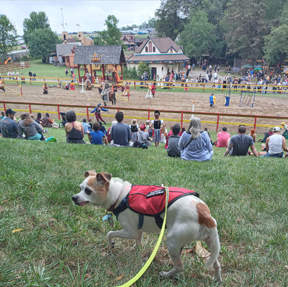
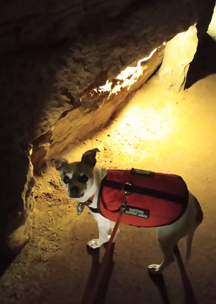
January 10, 2024
Walking With Your Pup: Why It’s Important
Up on the Woof welcomes guest pet blogger Cindy Aldridge.
Everyone seems to want to get fit, but humans aren’t the only ones who need regular exercise. Life may pull you in a lot of directions, but your pup can help you get in the exercise you need, too. Your four-legged family member needs to stay active, and letting him out a few times a day to potty and sniff around the yard just won’t cut it.
Taking your dog out for a walk might not seem like a big deal, but when you look at the benefits, you will realize how important those walks with your pup really are. No matter the dog’s age, Up on the Woof wants to help you both achieve your goals.
 Photo Credit:
Samson Katt via Pexels
Prevents Health Issues
Photo Credit:
Samson Katt via Pexels
Prevents Health Issues One of the most obvious signs of an under-exercised dog is obesity, and with over half of the nation’s dogs qualifying as obese or overweight according to the American Kennel Club, it’s time to start taking action. Unfortunately, obesity can cause health issues that can’t be seen with the naked eye, such as osteoarthritis, diabetes, thyroid issues, heart disease, high blood pressure, and respiratory conditions.
What’s more is that research cited by the American Veterinary Medical Association shows that obese dogs may have a shortened life span of as much as 2 ½ years compared to dogs who are at a normal, healthy weight. As a dog owner and lover, every moment with your pooch is cherished, so if you can add time back to the clock, why wouldn’t you? Walking is a great way to prevent obesity, but if your dog is already tipping the scales, it is best to talk with the vet first about the best way to approach diet and exercise.
Reduces Behavioral ProblemsContrary to popular belief, there is no such thing as a bad dog. Your dog doesn’t chew on the couch cushions or scratch the paint off the door to make you mad. Quite simply, it is often the case that your dog is bored and needs to get outside to release all that built-up energy. On your walk, keep things fun and fresh, and engage your pooch mentally by taking different routes or brushing up on commands. Allow your dog to take in his environment by using his nose to determine who’s been in the area.
Your dog has individual needs, but those needs will often be driven by his heritage. Knowing your dog’s genetics can give you some insights into behaviors and energy levels. For instance, if your dog seems to pace and nip at your coffee table, it could be he inherited herding instincts that aren’t being satisfied. Terriers, on the other hand, feel a need to dig.
Unfortunately, your dog might not be the best leash walker. If your pooch is prone to pulling, it is best to use a nylon, cotton, or leather leash or even a no pull harness rather than a retractable leash, as the retractable variety encourages pulling and reduces your control. By teaching your dog the proper way to walk, you will look forward to those daily walks rather than dread them.
If your pup is still having behavioral issues, it’s time to contact a professional trainer. A trainer can teach you how to bond and communicate effectively with your dog through positive reinforcement.
Find AlternativesIt doesn’t matter how many hints your dog drops that he wants to go outside, work and other responsibilities can be a time drain. Rather than let your pooch suffer the consequences of your busy schedule, you can bring in a professional dog walker to give your dog the walk he deserves at the pace and length he needs.
If a dog walker isn’t available, you can also let your pup work out his excess energy in the yard if you own your own home. To make this work, a fence is a must-have, and you should never tie up your dog to keep him from wandering. If you take your pup for neighborhood walks, be sure to pack some waste bags and some DIY natural sanitizer. No one likes encountering dog waste on the sidewalk, so be a good neighbor and pick up after your dog.
Invite a Walkies BuddyDogs benefit from socialization, as do we humans. To that end, consider connecting with a friend who has a compatible dog. You can even help each other with pet walking and play dates when things get busy! Make outings more fun with doggie-oriented invitations. You can design beautiful invitations and add your personal touch without spending a penny using free online templates. Choose one that fits your party’s vibe, customize it, and send it out via snail mail or text. Either way, it’s a chance to spread some warm fuzzies to your friends and their furkids.
Get Out with Your Pup
Dogs need those daily walks for their physical and mental health. Plus, your pooch is always up for an adventure, making them the best workout partner. If time isn’t on your side, bring in a dog walker to ensure your fur baby gets the exercise he needs. Above all else, keep calm and walk on!
For more dog-related musings from Ari Wulff, subscribe to Up on the Woof today!
November 30, 2023
New Adventures in PA Animal Rescue
Hello Friends.
I haven’t been very good about keeping up with Up On The Woof over the past year, and I apologize for that. . . however, my life has undergone major changes. Let’s catch up:
You may be aware that I was the sole caregiver for my partner for the past seven years, which took a toll on the time I had for writing and being creative, and just about anything else that I wanted to do. Her health began to deteriorate rather quickly in January, and I began clearing our belongings out of the cabin we lived in at the Cuyahoga Valley National Park for twenty-one years. In February, I moved her to a nursing facility and gave the Park notice that I’d be moving out. There was so much to do! I had to get rid of things we had accumulated during our 38 years together, decide what I’d be taking with me, and find a place of my own. Dalene died on May 9, 2023, and on the 19th I moved to the Pittsburgh area with our one remaining dog, and a cat. To say my life is different, is a gross understatement.

One of the things I had been missing over the past seven years, was involvement in animal rescue. Because all of the apartments I looked at only allowed a maximum of two pets, it means that I can’t foster. I wanted to be active in rescue again, and to be around dogs, who are the joy of my life. So, I was thinking that after I was settled, I’d look into transport, or I’d contact Animal Rescue Corps, and see how I could go about getting trained to work with them during national animal emergencies. Somehow — I wish I could remember how — I heard about CART: County Animal Response Team. It is a group here in my new county that does the same sort of thing as ARC. They are trained to respond to animal emergencies, and dispatched via 911 or are requested by Police or Fire on the scene of an incident. Training with them would make me a first responder for animals! CART teams in PA are branches of PASART: Pennsylvania State Animal Response Team. These groups were formed after Katrina, because in the aftermath of the hurricane was the realization that many animals had been left behind, and also that many people hadn’t evacuated because there was no place to go with their pets. The Federal Government passed the PETS Act. This opened the door for emergency animal groups to form that would work in conjunction with FEMA and The Red Cross to get pets to safety in the event of an emergency.
CART isn’t only about major disasters, though. We can be requested by police and fire when they have a situation that involves an animal, such as an auto accident or pets that have been in a house fire. The group I joined has been dispatched to round up farm animals on the freeway when the truck they were in overturned, hoarding situations, horses stuck in mud, an animal that fell in a well, rescuing animals after a flood, after a tornado, all sorts of things!

Training has been intensive, and is ongoing. I had to pass three FEMA classes to qualify, and then attended CART training classes in animal handling, equipment, first aid, animal behavior, lost pet recovery, and how to set up an emergency animal shelter. There are still many classes ahead, and also field work. I was activated as a team member at the beginning of October, and was dispatched for the first time. Several rescue groups responded to the incident, which involved the removal of 49 animals. It was a pretty big case for my first experience. There were dogs, cats, ducks, chickens, a cockatiel and a turkey. Training kicked right in, and I was able to be an effective team member. All the animals were removed safely and transported to foster homes, rescues, or kennels. It was very satisfying! I’m looking forward to future rescue experiences with CART.
In addition to extensive training, CART provides some equipment to their volunteers, but there’s a lot of things that we still have to buy for ourselves. I have a wish list on amazon of things I still need, if any of you would like to help me gear up. You can access it here: GEAR UP.
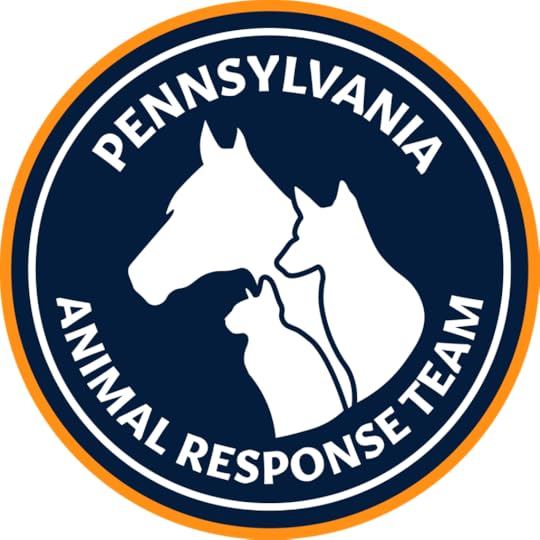
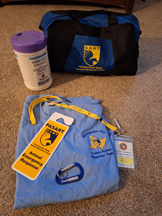
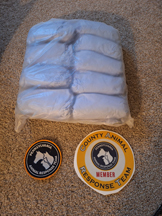
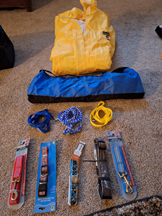
September 7, 2023
Quality Care in Your Senior Dog’s Twilight Years
Dogs are a source of joy, loyalty, and love. It’s only natural to want your pet to enjoy health and happiness as a beloved member of the family. As with humans, your pet’s needs change with age. A dog’s average lifespan varies by size and breed. Large dogs are generally considered seniors after age 6, while smaller breeds acquire the senior label between ages 7 and 10. But you can help your pet live a long, happy life with appropriate care. Today, Up on the Woof shares some tips and resources to help you be the best pet-parent in your companion’s senior years.
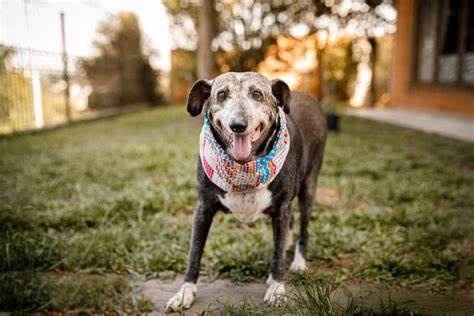 Tailored Nutrition
Tailored NutritionYour senior pet has different nutritional needs than a younger animal. Older animals aren’t as active as their younger counterparts, so it’s important to provide essential nutrients without excessive calories or fat. Many pet food brands sell specific products for seniors. Health issues also affect nutritional requirements.
Indoor AdjustmentsSenior dogs may develop arthritis and stiff joints. Don’t force your pet to get up or move quickly. Give your dog plenty of time to wake up and stretch before a morning walk. Senior dogs may also struggle to jump or climb onto beds and furniture. Consider installing a ramp or a set of stairs so that your pet can reach preferred sleeping areas easily.
Outdoor Safety and ExerciseMost senior dogs still enjoy their favorite activities. A few alterations and precautions let your pet spend time outdoors safely and comfortably. Light exercise can help your senior pet stay active and healthy, but don’t push a tired animal to continue an activity, and plan frequent rest breaks. A stroller may be useful for long walks or exploring parks. Your dog can stay out longer and enjoy the journey while resting in a stroller. It never hurts to get some advice from the experts before investing in new pet products; click here to find tips and objective reviews that you can trust.
Fences and EnclosuresA sturdy fence is the best way to keep your dog safe in the yard. Fencing also keeps wild animals and other dogs out. Some pre-made wire or plastic enclosures can be set up and moved easily. These enclosures usually cover small areas, and they aren’t permanent. You can also fence in your entire yard.
Younger dogs may try to jump over or dig underneath fences, but senior dogs usually don’t have the urge, or the energy, to escape. This gives you more flexibility to choose a fence for functional and decorative purposes. A professional fence company can help you choose materials and designs to complement your home’s aesthetics. Fencing also adds value to your property, so keep track of receipts for materials and labor. Take pictures before and after installation, especially if you’re thinking about selling your home.
Veterinary CareRegular checkups help your pet enjoy the highest possible quality of life. The American Animal Hospital Association recommends that senior pets see a veterinarian at least once every six months.
Remain Sensitive to Your Pet’s NeedsMake the most of your pet’s twilight years by paying attention to their nutrition, making accommodations (including those that could improve your property’s value) for their changing needs, and spending lots of quality time together.
Up on the Woof
is the place for dog-lovers and dedicated dog-parents to share tips and information. Questions? Just scroll down to find our comment form!
This guest post was written by Cindy Aldridge cindy@ourdogfriends.org
June 29, 2023
Wow, it’s Hot Outside!
The planet is heating up, and we’ve been seeing record breaking temperatures across the globe. Now, more than ever, it’s important to be conscientious about how hot weather affects your dog.
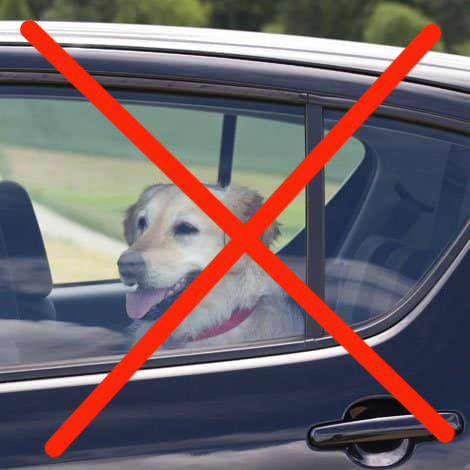
Every year, people lose dogs to heat stroke. That’s because dogs don’t really sweat. They do have some sweat glands in their foot pads, and they pant to stay cool, but none of that is enough in certain circumstances.
If you are outside with your dog on a hot day, make sure they have shade and water to drink. Never leave your pet alone in a car (even with the windows down) if the outdoor temperature is 70 or above. The inside of a car can go from 70 degrees to 104 degrees in just 30 minutes!
Our dogs love to be with us, and to go where we go, but it’s kinder to leave them at home in hot weather. And remember, exercising them when it’s hot out can be just as dangerous as being left in a hot car.

Signs of heat stroke are disorientation, dry, pale gums, bright red tongue, thick saliva, rapid heart rate, vomiting, excessive panting, and difficulty breathing. If not cooled down right away, organ damage, or even death, can occur. Dogs that are old, overweight, dark coated, or brachycephalic (flat face) are at twice the risk.
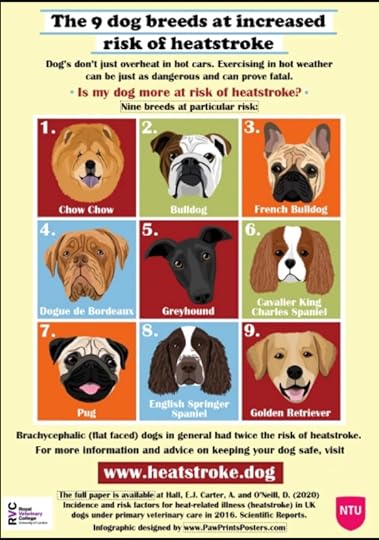
If your dog overheats, give him cool water to drink, place a cold towel or bag of frozen veggies on his head, (but not for more than a few minutes at a time.) Run a cool (not cold) bath, or hose him off –but remember, the water that’s been resting in an outdoor garden hose can be really hot! so let it run cool, first.
Another danger is walking your dog during the hot times of day, when pavement can become dangerously hot. If the pavement is too hot for you to touch with the back of your bare hand, it’s too hot for your dog’s paws and can badly burn their pads.

Be safe out there! Remember, your dog is counting on you to keep him safe.
June 4, 2022
I’m Excited to Show You My Yelodoggie ACEOs
 Floyd
FloydThis is Floyd, the yelodoggie. In 2003, he stepped out of a dream and into my life. He underwent a bit of a makeover from the weird, scruffy big-headed terrier I met in a dive bar. I think his head must be so big because it is full of ideas. I began to paint little pictures of him in various situations as a way to spread the joy that only dogs are capable of creating. In addition to the paintings, Floyd has appeared on mugs, t-shirts, mousepads, clocks, and more. This year, he appeared in his first book: Why Am I. . . ?
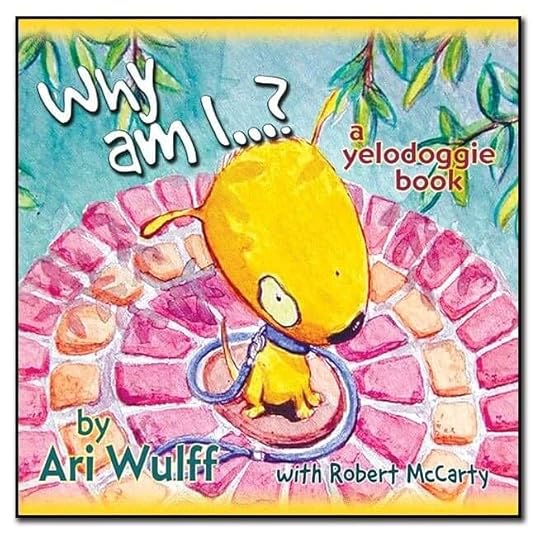
ACEOs are highly collectible. Each one is 2.5″ x 3.5″ and is a signed and numbered one-of-kind piece of art.
This series reproduces famous classic art pieces merged with a yelodoggie character. I spent from 1-3 hours on each miniature, each full of detail.
I used a mixture of watercolor, acrylic, and colored pencil.
On Monday, June 6, 7 pm I’m proud to offer the first series of twenty yelodoggie ACEO (Art Cards Editions and Originals) miniature paintings.
I am offering the cards in this first series in two price tiers: $15 and $20. The prices are based on how much work I put into them. There will be ten different cards in each tier. To make things extra fun, this will be a blind sale. That means each card has been sealed into an envelope, and while each buyer is guaranteed one of the paintings shown on the listing, neither I, nor the buyer, will know which specific one until it is received!
 Yelodoggie Art Card Originals series 1. (Pictured: xerox-es of the cards)
Yelodoggie Art Card Originals series 1. (Pictured: xerox-es of the cards)You can order your unique yelodoggie ACEO in my YelodoggieArt etsy shop at this link: YelodoggieArt . The listings will go live at 7 pm Monday, June 6.
There are good indications that they will go fast.
Miniature wooden easels to display your ACEO, and rigid transparent plastic top-loading card sleeves will also be available for a nominal fee.
__ATA.cmd.push(function() { __ATA.initDynamicSlot({ id: 'atatags-26942-629c4a90a6cfc', location: 120, formFactor: '001', label: { text: 'Advertisements', }, creative: { reportAd: { text: 'Report this ad', }, privacySettings: { text: 'Privacy', onClick: function() { window.__tcfapi && window.__tcfapi( 'showUi' ); }, } } }); });April 20, 2022
How You and Your Dog Can Be Great Neighbors
By Guest Blogger, Cindy Aldridge.

Did you ever have a neighbor with a noisy, barking dog? Or, maybe a dog that was repeatedly invading your lawn? Maybe you even lived near a dog who was aggressive and unfriendly. If you’ve experienced this, you understand how important it is to train your dog to behave well and not be a nuisance; after all, neglecting to do so is irresponsible pet ownership. It could even lead to a situation in which you are no longer able to keep your dog.
However, if you follow these tips your happy, well-trained dog will be welcome and loved by all – and you’ll be able to look forward to many years of friendship with them.
Keep up to date with your dog’s health care.

One of the first things you should do when you bring home a new pet is to find them a good, reputable vet. This is important both for their routine treatments such as vaccinations and parasite prevention, and also so you can get them tended to as quickly as possible in the event of an illness or accident. Talk to your vet about a schedule for getting your dog spayed or neutered if this has not been done yet. Dogs that have been fixed are less likely to roam and cause trouble in your community.
Help your dog be on their best behavior.

Letting your dog do whatever they like and run wherever they please does them no favors. They may get hurt or be picked up by animal control. They could also end up causing damage or even hurting someone else, or someone else’s pet. Practice firm, patient, and consistent discipline to teach your dog to come when called, to stay out of neighboring lawns, and not to jump on people. Make sure they have the basic training they need to behave well at home and elsewhere. A good dog trainer can help you teach your dog to listen, respond, and obey.
Give your dog the space they need to run and play.

Dogs need exercise if they are going to be happy and healthy. If they are cooped up all the time, they become bored and lonely. They may suffer poor health as a consequence, or develop bad habits such as chewing, digging, or barking incessantly. So, take your dog for walks frequently, play games with them, and make sure they have a safe, appealing environment to explore. A dog who never gets a chance to play may become irritable and anxious, and keep the neighbors awake with constant barking. It’s better for you, your dog, and your neighborhood for you to let your pet play in a safely fenced area with the option to shelter from sun or bad weather. Consider investing in fence installation, and look for companies that specialize in pet enclosures.
Don’t leave your dog alone for too long.

Even if your pup doesn’t have separation anxiety, too much time alone can lead to a host of unwelcome behaviors. Older dogs can be left alone for longer, say if you work an eight-hour shift, but puppies are a different story, and they require a lot of attention. If you have large swaths of time where you need to be away from home, consider hiring a dog walker or pet sitter. This ensures your pup has some interaction during the day, and that they get an extra dose of exercise. If you have the option to work from home, remote work could be ideal if you have a new puppy. You’ll be able to keep close tabs on your little one while still fulfilling your work obligations. When creating a home office, just be sure you keep safety in mind, like putting up wires, securing heavy objects, and being mindful about small items that could be ingested like paper clips or staples.
Know the laws.

Much of being a good dog-owning neighbor has to do with basic manners. Don’t violate people’s boundaries. Don’t trespass. Don’t assume that people should have to put up with your pet’s bad behavior just because you do. But much of it also has to do with complying with laws regarding dog ownership. Some laws to be aware of include buying a dog license, keeping your dog up to date with mandatory vaccines, leashing them when going on walks in public, and not letting them take a dump in other people’s lawns. Also, be aware that should your dog bite someone, you may be liable for damages unless you can demonstrate that your dog was provoked.
You love your dog, so naturally, you hope others will, too. But remember, some people simply are not dog people, and that’s okay. As for those who are? They will probably enjoy getting to know your canine buddy. And they’ll be pleased to find you’ve taken the time to make sure your dog is safe, healthy, and well-mannered.
You can contact Cindy at: cindy@ourdogfriends.org
‐——————————‐—————–
A Note From Ariel, Up on the Woof:
Don’t leave your dog outdoors, even inside of a fenced-in yard when there is no one home to check on them. Additionally, some communities have laws banning residents from keeping certain breeds like pit bulls, mastiffs, and Dogo Argentinos, or may have special requirements for certain breeds. Save yourself some heartache, and before you adopt, be sure to check with your city or township laws, and follow their regulations.
February 13, 2022
So Much More Than Nothing
I am really struggling today.
By that, I mean that the depression that I keep locked securely in the cabinet has escaped today and is wielding a baseball bat and beating me black and blue.
I find myself here because someone I love told me today that he hates animals because of me. Then he said (regarding my advocacy and activism) “. . . And you have nothing to show for it! ” you know, he may as well just have said that he hates me. My animal advocacy is an integral part of who I am as a person.
I have nothing to show for it? Lives saved, laws changed, sick and injured animals helped, educating others, reuniting lost pets with their families is “nothing?” Five books written is “nothing?”

I know those things mean nothing to that person, who says he hates animals now. I don’t have a big house, or a fancy car. I don’t have any money that isn’t tied up in surviving. I don’t have a bunch of high tech equipment like the newest phone or the best TV. I don’t have jewelry or fancy clothing. But those are the things of value to him, not to me. And what does it say about him, that he hates animals because I love them and care about them?
I feel pity for people like him. People who have never, and will never, know the pure joy of being loved unconditionally by another being, because they are not open to loving an animal. Humans aren’t capable of giving the holy love that animals give. We may aspire to it, but as a species, we are too flawed to deliver. Too easily angered and hurt. Too prone to holding grudges and blaming others. Too distracted by our own thoughts and fears and jealousy.
What do I have to show for my advocacy and activism? Courage. Tenacity. Empathy. Knowledge. Creativity. Inspiration.
Love.
The things I value most.
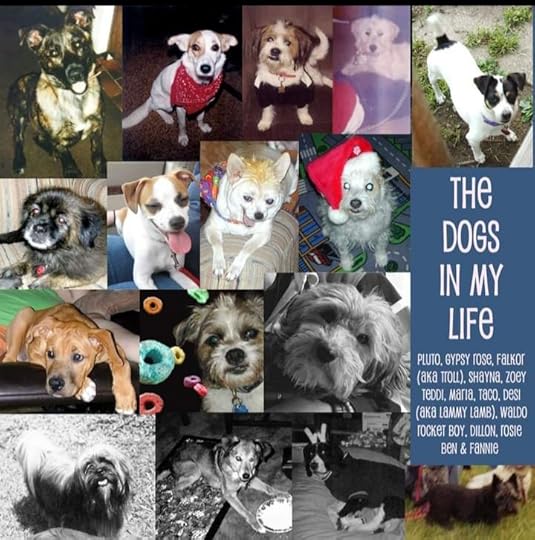
February 11, 2022
I Have Good News and Bad News
Hello readers. I see it’s been a minute since I was here posting. I should have had more time to post because of the pandemic, but it didn’t work out that way. Here is a quick rundown of some highlights before I get down to today’s business.
We are down to one dog, Maria. I want another dog, but I am getting a lot of blowback from Dalene. While I understand that she is still mourning Rocket Boy, I also know that another dog would be healing. I have applied to adopt a few over the past twelve months, regardless of her protestations, but others have beat me to all of them, or wouldn’t adopt out of state, due to covid.
 Maria is doing this new thing: one ear up, one ear down
Maria is doing this new thing: one ear up, one ear down D Said “NO MORE DOGS. If I get another animal it will be a CAT.” And wouldn’t you know it, a kitten manifested under our kitchen window last October, and moved right in. The kitten claims to have known us from a former life, and who am I to argue the ways of Gods and angels?
 Here he is. His name is Orbit, and I won’t be writing about him here Up on the Woof, because this is a dog blog, about dog things.
Here he is. His name is Orbit, and I won’t be writing about him here Up on the Woof, because this is a dog blog, about dog things.Maria was not happy about the development, but since then she has grudgingly accepted him.
I’ve opened a new shop on etsy to sell leaf litter and organic foods for hermit crabs. I won’t be writing about that, Here, either. However, for those of you who keep crabs, check out CrabOrganicals.
I’ve taken up a needle felting, and the very first thing I tried my hand at was a yelodoggie. I will soon be making some more of these to sell in the Yelodoggie Art Shop.
 A needle felted Floyd. What? You didn’t know that’s the yelodoggie’s name?
A needle felted Floyd. What? You didn’t know that’s the yelodoggie’s name?And speaking of the yelodoggie, the first Yelodoggie book, “Why Am I. . .?” is available on the Zon. And if you scroll on down the Amazon page, you’ll see some reviews, and also an endorsement by none other than Jack Zipes.
Midwest Book Review loves it, too.
Now onto the GOOD NEWS and BAD NEWS . . .
It feels like I’ve been posting about this forever, and in blog years, I suppose I have. Ten years ago, when I covered one of the worst cases of animal abuse and cruelty in West Virginia history for Pet Pardons Media, I told you all about it here Up on the Woof. I made the offender, Jeffrey A. Nally Jr. my personal project that day, and began a campaign to keep him behind bars. The bad news is that after being initially set off in June of 2021, Nally was paroled on Dec 2, 2021, after serving 10 years and 7 months of his 10 to 45 year sentence, even though more than 11,000 people signed a petition asking the parole board to deny him, and many more wrote personal letters and mailed in postcards.
Now the good news: he has already reoffended! Just today, I spoke with the Hancock County prosecutor who verified that Nally had been arrested this month on domestic violence charges (he beat up his mother, again) and there were firearms in the house where he was living in East Liverpool, Ohio. Because he us a felon, he is a “restricted person” and both of these things are parole violations. He has pled not guilty, because he knows that if found guilty, he would be incarcerated again to serve out his 45 year sentence. While I am sorry for his mother’s pain, I am delighted that he has already shown his tendency of continued violent behavior, and that ultimately, he will orchestrate his own undoing.
Keep following Up on the Woof for updates on this case.



